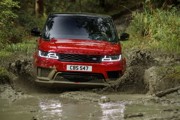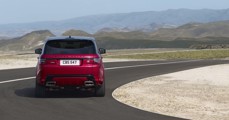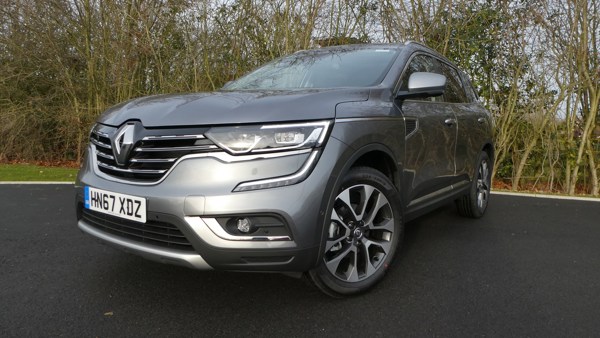Review
Halfway through 2017 Land Rover discreetly added a new entry point to the Range Rover Sport line-up with the SD4 diesel.
Introducing a four-cylinder engine to a 2.1-tonne luxury SUV sounds like a backwards step but the twin-turbocharged 2.0-litre unit is surprisingly potent. It develops 240PS and 500Nm of torque.
Paired to an eight-speed automatic gearbox, the SD4 is actually quicker to 60mph than all but the range-topping supercharged V8 versions of the original Sport, launched in 2004. It completes the sprint in eight seconds.
Aggressive throttle mapping means the SD4 always feels keen and surges forward when you stroke the accelerator. This does mean that it sometimes reacts with more vigour than you might expect, however.
Land Rover claims an official fuel consumption figure of 45.6mpg and we were astounded that during our test we almost met that figure because the Sport is neither light nor particularly aerodynamic.
Engine noise is well insulated inside the Range Rover Sport and it’s only when you really need to press-on that its lack of cylinders becomes apparent.
Pricing for the SD4 starts at £61,315, with only HSE trim available. It comes as standard with coil spring suspension - instead of air like the rest of the range - but enjoys all the usual Range Rover appointments.
CO2 emissions of 164g/km were the lowest in the range until the announcement of a new plug-in hybrid version, which has just gone on sale.
Drivers will face benefit-in-kind (BIK) tax bills of £9,000 per year for the diesel, whereas the plug-in hybrid is much more attractive with BIK payments of £4,500.
Opting for the hybrid costs £10,000 more like-for-like, but interestingly the whole life costs are far greater with running costs of 75p per mile, compared with the SD4’s 64p per mile.
Even the more powerful SDV6 diesel is cheaper for fleets over a four-year contract than the hybrid.
A range of updates have been introduced to the Range Rover Sport for the 2018 model year. Firstly, it has undergone a mild exterior refresh, introducing new bumpers and new LED headlamps.
Inside, the already high level of luxury has been further improved with a twin touchscreen dash setup - the same as we saw in the new Range Rover Velar.
Cabin space is plentiful and the car is quiet and smooth riding almost all of the time. There is also very little body roll when cornering which improves passenger comfort and driver confidence.
In some cases the entry-level variant is one to be avoided, but the Range Rover Sport SD4 offers more than enough speed, efficiency and luxury to suit most requirements.
Its balance of emissions and running costs offer fleets a more attractive package than similarly priced rivals, but ultimately the extra power of the SDV6 is likely to tempt most drivers for only a modest increase in costs.
Specs
| Manufacturer | Land Rover |
| Model | Range Rover Sport |
| Specification | Range Rover Sport SUV 2.0SD4 240 SS HSE 5Seat Auto8 18MY |
| Model Year | 0.00 |
| Annual VED (Road tax) | £0 |
| BIK List Price | £60,760 |
| CO2 | 164g/km |
| BIK Percentage | 37% |
| Insurance Group | N/A |
| CC | N/A |
| Fuel Type | Diesel |
| Vehicle Type | SUV and Crossover |
| Luggage capacity (Seats up) | 5litres |
Running Costs
| P11D | £60,760 |
| Insurance group | N/A |
| Fuel Type | Diesel |
| Cost per mile | 124.12ppm |
| Fuel | 11.78ppm |
| Depreciation | 106.55ppm |
| Service maintenance and repair | 5.79ppm |
Rivals
Info at a glance
-
P11D Price
£60,760
-
MPG
45.6 -
CO2 Emissions
164g/km -
BIK %
37% -
Running cost
3 Year 60k : N/A 4 Year 80k : N/A -
Fuel Type
Diesel















 Diesel
Diesel

















